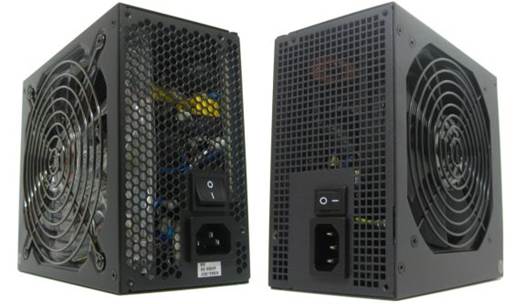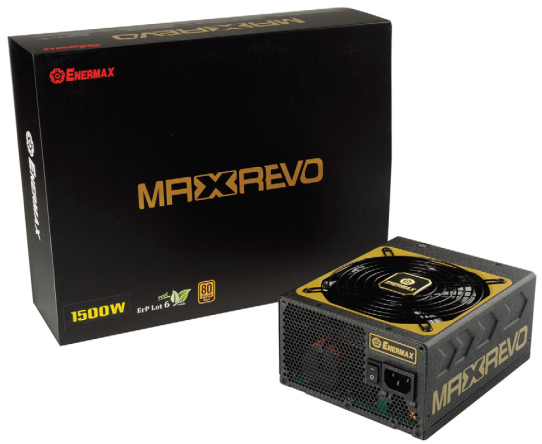Premium PSUs Rounded Up & Run Ragged
When investing in a power supply, there’s
more to consider than how many watts it can deliver. For starters, you should
know the number of PCI-E and EPS12V connectors you’ll need. In terms of extra
connectors, overclockers should note that many top-notch motherboards now offer
two 8-pin EPS connectors to deliver extra juice to the CPU. Some motherboards
with multiple PEG slots also feature one 6-pin or 8-pin +12V connector to
provide supplementary power for running a multi-card (and possibly overclocked)
graphics subsystem. As such, the number and types of +12V connectors on your
power supply can have a big impact on what type of motherboard you can use in
your build.
You’ll also want to take the unit’s
efficiency into account. Many high-end power supplies now meet the 80 PLUS
Platinum (at least 92% efficient at 50% load) or Gold (at least 90% efficient)
certification, which can save on your power bill and help the environment.

For this roundup, we checked out some of
newest options from a variety of big-name PSU vendors. For your reference,
we’ve added the benchmark numbers for all of the power supplies we’ve reviewed
since the last PSU roundup (February 2012 issue) into one massive chart found
at the end of this article. This way, you can compare and contrast how the
units in this roundup stack up to the models we’ve tested in the previous nine
months. Knowledge is power, after all, and this roundup is all about power.
How we tested
We installed the power supplies into a
system running Intel’s Core i7-3770K on a GIGABYTE GAZ77X- UP4 TH motherboard.
For graphics power, the system included two ZOTAC GeForce GTX 580s. We then
added 16GB of Patriot Memory’s Viper Xtreme DDR3-1600 and a 128GB Crucial
RealSSD C300 to round out our test system. To max the system’s power draw (thus
testing our PSUs), we simultaneously ran POV-ray 3.7 Beta (stress CPU) and the
Aliens vs. Predator (stress GPUs) benchmark, which was set to the highest
settings and a resolution of 2,560 x 1,600.
We measured the maximum wattage, power factor,
volts, and amps using an Extech True RMS Power Analyzer Datalogger. We took
measurements with SLI both enabled and disabled to show you how the power
supply performed at different loads. The key measurement from the testing
process is power factor, because it measures the relationship between the power
available (the incoming AC power) and the actual amount of DC power used. Thus,
it’s another way to measure a power supply’s efficiency.
Enermax Maxrevo 1500w
This completely modular power supply from
ENERMAX provides you with 1,500 watts of power, and there are six +12V rails
(two 20A, four 30A) to power a range of high-end components. ENERMAX also
boasts that MAXREVO 1500W utilizes a transformer with four magnetic quadrants
for superior switching efficiency and high-wattage output stability. Another
cool feature is a copper-bridge array that, according to ENERMAX, gives the
MAXREVO the ability to regulate wide DC dynamic loads within 2%. To put that in
perspective, Intel’s SSI Design Guide requires that loads only be regulated
within 5%.

MAXREVO
1500W: $359.99/ ENERMAX, www.ecomastertek.com
With the MAXREVO 1500W, ENERMAX bundles the
24-pin main power and +12V EPS 8-pin cables together, and the bundle connects
to the two 12V rails rated at 20A. To power your graphics cards, there are five
PCI-E cables, and each cable has two 6+2-pin connectors. It may seem like
overkill, but the 10 PCI-E connectors can come in handy with newer motherboards
that offer built-in 8-pin and 6-pin PCI-E inputs for extra GPU power stability.
You’ll also find another +12V 8-pin EPS connector and one +12V 4-pin ATX
connector to cover all of the possible CPU power configurations. There are a
total of 14 SATA connectors, 10 Molex connectors, and two FDD connectors. One
of the cables offers a mix of SATA and Molex connectors, while the remaining
six cables are built with just SATA (three sets) or Molex (three sets)
connectors.
The MAXREVO 1500W measured 8.25 inches
factoring in cable bend. ENERMAX installed a 139mm Twister Bearing fan with a
rotor that uses a magnet for frictionless motion, and the fan has a
self-lubricating bearing material to improve its life span. The power supply
meets the ErP Lot 6 2010 standard, so you can pair it with a motherboard that
supports ErP Lot 6 to let the PSU work at less than 1W in standby. This power
supply is up to 94% efficient and meets the 80 PLUS Gold certification.
In our testing, the MAXREVO 1500W delivered
the highest power factors in both the single-GPU and SLI tests. With one
GeForce GTX 580, we saw a maximum wattage of 410W, a power factor of .989, a
maximum voltage of 116.3V, and a maximum amperage of 3.56A. In SLI, the power
supply produced 620 watts, a .991 power factor, 117.1 volts, and 5.41 amps. The
high power factor results show the ENERMAX’s transformer and voltage regulation
technology help to improve its power conversion capabilities.

The 1500W MAXREVO is best for enthusiasts
with at least three GPUs, as they’ll be able to take full advantage of the
power supply’s capabilities. We can also see this unit as a fit for those who
want a power supply that offers enough power and connectors for future high-end
builds.
In our testing, the MAXREVO 1500W
delivered the highest power factors in both the single-GPU and SLI tests.
Benchmark Results
Two GeForce GTX 580s
§ Maximum
Wattage: 620
§ Power
Factor: 0.991
§ Volts:
117.1
§ Amps:
5.41
Specifications
§ Price:
$359.99
§ 12V
rails: 6
§ +12V
max (A): 2 20A, 4 30A
§ +5V
max (A): 25A
§ +3.3V
max: 25A
§ Efficiency
rating (as advertised): 94%
§ Fan:
139mm
§ PCI-E:
8 (6+2-pin)
§ Main
12V: 24-pin
§ 8-pin
EPS 12V: 2 (8-pin)
§ 4-pin
12V: 1
§ SATA:
14
§ 4-pin
Molex: 10
§ Floppy:
2
§ Warranty: 5 years